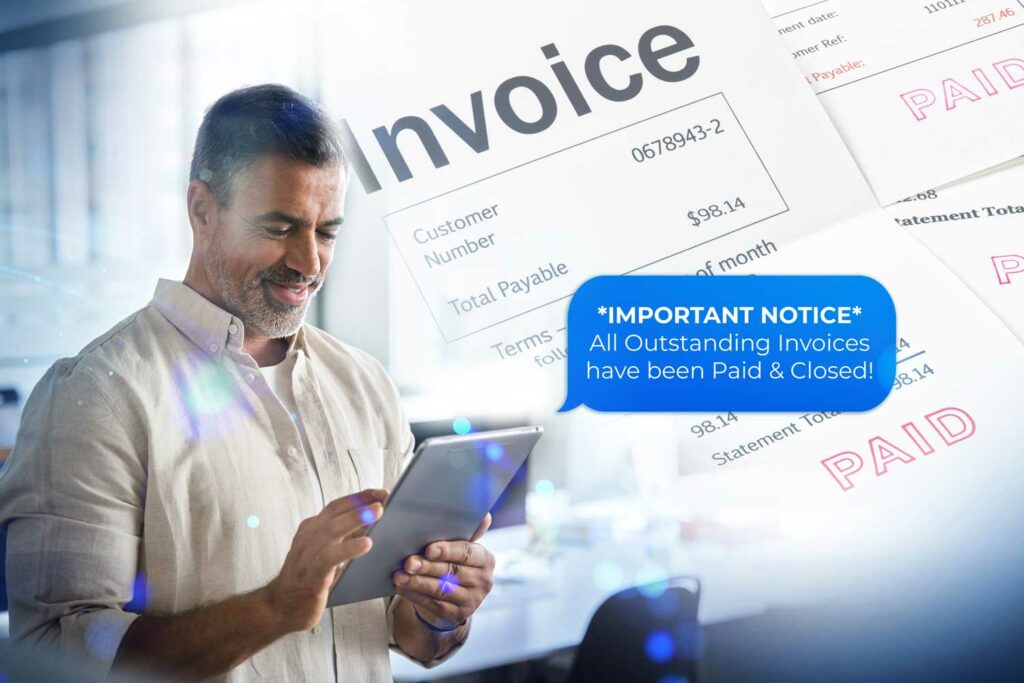
Managing your business’s cash flow and trying to get invoices paid on time can seem like an uphill battle. These are the customers who have consistently helped you build your business. Preserving client relationships is essential, especially when you’re offering credit terms like net 30. At the same time, any client who owes you money for goods or services you’ve delivered is a debtor with an account on your dashboard. You’ve already earned that profit and deserve to get paid without compromising your productivity. Establishing a clear payment term in your contract and sending reminders using accounting software can incentivize customers to pay their invoices on time. On this page, we’ll walk you through how to bill customers effectively, leverage early payment discounts, and implement strategies to encourage them to pay before the invoice due date. By doing so, you can ensure a positive cash flow, spend more time growing your business, and less time chasing overdue payments.
The Importance of Prompt Client Payments
More than half of all businesses say collecting payments from customers takes too long, and 45 percent say their clients don’t pay on time, per SmallBizTrends. You’re likely sending multiple invoices and making calls during this time, which takes up your time and costs money. Meanwhile, your business is missing out on cash that would otherwise be used to make payroll, begin the next customer order, invest in business growth initiatives, or cover other expenses.
We also know that the longer an invoice remains outstanding, the lower the chances are of the customer paying at all. Around 1.5 percent of receivables are written off as bad debt, according to TSI. If your business brings in $1 million per year, that’s $15,000 you’ll never see.
Knowing how to get paid faster is the first step in reducing that figure. When you get slow-paying clients to make payments promptly, it’s easier to manage your cash flow, and you can focus on your business more.
How Client Screening Can Help You Avoid Late Invoices
Avoiding late invoices starts with choosing the right clients. One of the most effective ways to get clients to pay on time is to assess their payment behavior before doing business. When a client owes money, it’s often a symptom of poor upfront qualification, not just a breakdown in reminders or payment systems.
Before extending net terms or setting up a payment plan, verify that new clients have a history of paying their bills and invoices reliably. Ask for trade references or review their business credit file. If clients may pose a risk, offer multiple payment options up front, including partial prepayment. This increases the likelihood they’ll pay their invoice without delay or dispute.
Let your client know what your payment expectations are during the onboarding process. This includes the method of payment, timeline, and how communication from the client should be handled if issues arise. Clear expectations and thoughtful screening make it easier for them to pay—and for you to get paid on time—without needing to send repeated payment reminders or take legal action down the line.
8 Simple Ways to Encourage Debtors to Pay on Time
Many business owners want to know how to collect money from clients who won’t pay or how to convince a customer to pay their debt. It’s not about learning how to persuade a customer to make a payment. There should be no convincing. Follow the tips below, and you’ll likely see payments accelerate without any special effort.
1. Build Strong Client Relationships
Treating your clients well makes them less likely to jeopardize the relationship by paying late. From a business perspective, it’s not in their best interest. Happy, loyal customers also tend to feel invested in your success and won’t want to disappoint you by missing a payment deadline.
2. Set Clear Payment Terms
Always provide clients with upfront payment terms and your late payment policy before any work is performed or goods are delivered. These should be freely accessible on your website, included in bids and estimates, part of any contracts your clients sign, and shared with invoices.
Make things as simple as possible. For instance, people often use terms like “Net30” and “Net60.” These aren’t clear payment terms. Use phrases like “payment due in 30 days” instead. Also, ensure the due date is clearly written at the top of the invoice, so there’s no question about when they need to pay, and no math is required.
It’s also worth noting that clients will typically take whatever time you give them to pay. If you allow them 30 days, they’ll take it. If you give them 60 days, they’ll take that too. Minimize the payment window as much as possible, and you’ll naturally see faster payments.
3. Invoice Promptly
If you’re worried about encouraging prompt payments, ensure you’re invoicing promptly too. Your clients aren’t going to think paying is an urgent matter if you don’t behave like it is. Rather than waiting for the start of the month or bi-weekly billing cycle, send an invoice out the day work is complete or goods are delivered. Because invoicing can be expensive and multiple reminders are often sent, consider automating your invoice process to save time and money.
4. Make it Easier for Clients to Pay
Offer multiple ways for clients to pay their invoices, so they can use whatever method is best for them. If possible, digitize the process and let them pay online too. As you roll out your new options, don’t worry too much about how to encourage customers to pay online. Just ensure they can do it through your website and include instructions on your invoices. They’re likely to adapt quicker than you expect.
5. Consider Offering Incentives for Early Payments
To manage your business’s cash flow and get paid early, consider offering an early payment discount as an incentive. Even a small incentive for paying early can move your invoice to the top of a customer’s bill stack. If you decide to implement this strategy, ensure it’s prominently listed at the top of the invoice, a key payment term in your contract. You’re likely to see more customers pay their invoices on time if you pair this with a digital reminder, leveraging your accounting software. For instance, send a text message or email a day before the invoice due date, reminding them they have 24 hours to claim their early payment discounts. This tip encourages them to pay before the deadline, creating a win-win situation for both parties. By doing so, you can avoid the tedious task of having to chase overdue accounts and consistently ensure a positive cash flow for your business.
Always pay attention to the payment due date and remind your clients to settle their account, incentivizing them to pay early and avoiding any late payment fees. This approach not only establishes a clear payment term but also ensures you get paid sooner, without compromising your business’s productivity.
6. Implement Penalties and Late Payment Fees for Slow-Paying Clients
Many small business owners worry about late payment penalties, but they’re standard in most industries. To manage your business’s cash flow, it’s important to establish clear payment terms. Observe your competitors, especially larger companies. You’ll often find models like a flat late penalty fee or interest charges. Some even require customers who never pay on time to provide payment upfront before delivering goods or services. Others dismiss such clients altogether.
Your policies are your decision; tailored to your needs. However, always communicate any penalties, whether it’s a discount for early payment or a late fee, before starting work, with every order, and before applying them. This strategy encourages clients to pay their invoices on time, ensuring prompt payment and positive cash flow. By utilizing accounting software, reminding clients of the invoice due date, and incentivizing them to pay early, you’ll avoid chasing overdue payments.
7. Keep in Touch and Send Friendly Reminders
On an invoice’s due date, the likelihood of receiving payment drops to just 95 percent if it hasn’t already been paid, according to research from the Commercial Collection Agencies of America. The likelihood of collecting drops to 89 percent when an invoice is 30 days overdue. If an invoice reaches 90 days overdue, the likelihood of collecting drops below 70 percent.
That means every day matters when a balance is overdue. Staying in contact with the client keeps you at the top of their mind. Each contact is also an opportunity to connect with the client meaningfully.
Many business owners have concerns about how to approach a customer for payment without creating friction. The trick is to handle it from a customer service perspective rather than a collections standpoint and to use automation to reach them as much as possible. Reminders should trickle in before the payment is due to ensure they remember the deadline. Then, a reminder should be sent the day after the deadline. This can be a friendly message, such as “Oops. You missed your payment. We can waive the late fee if you pay within the next 24 hours.” This approach is very effective, especially when paired with a link to an online billing portal.
8. Partner with an Invoice Factoring Company
While invoice factoring may not directly speed up your clients’ payment timeline, it ensures your business gets the cash faster. With invoice factoring, a factoring company buys your unpaid B2B invoices from you at a discount. You get most of the invoice’s value upfront and can spend it however you wish. The factoring company waits for payment, then sends you the rest minus a nominal factoring fee once the client pays their invoice.
When you partner with a company like Viva, you’ll also benefit from collections services, so you no longer have to chase invoices and client credit checks, to help ensure your clients can pay their invoices. Plus, we make it easy for your clients to pay and provide white-glove customer service so they stay happier, too.
For example, in the trucking industry, transportation factoring can be a game changer. Imagine a trucking company waiting 30, 60, or even 90 days for clients to pay their invoices. During this time, expenses like fuel, maintenance, and payroll keep piling up. By using transportation factoring, the company can immediately convert those unpaid invoices into cash, ensuring they have the working capital to keep their trucks on the road and drivers paid. This allows trucking businesses to focus on growth and operations without the financial strain caused by delayed payments.
Get a Complimentary Invoice Factoring Rate Quote from Viva
If invoice factoring is the solution for your slow-paying clients, Viva can help. To learn more or get started, request a complimentary factoring rate quote.
- Factoring FAQs and Key Questions to Ask Before Signing a Contract - November 25, 2025
- How to Control Business Spending without Sacrificing Growth - September 22, 2025
- Why Cash Flow Management is Crucial for Growing Businesses - August 14, 2025

